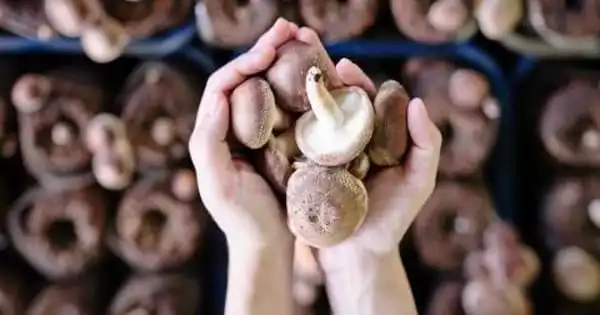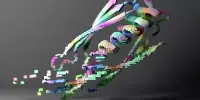A mushroom boom is currently in full swing, with everything from the well-liked Netflix documentary Fantastic Fungi to the flurry of clinical studies examining the use of a compound found in hallucinogenic species as a treatment for melancholy.
But mycelium, the mushroom’s root structure, is one component of fungus that companies are now particularly utilizing.
Mycelium is grown on a big scale by the London-based biomanufacturing firm Biohm using feedstocks like food scraps and sawdust to produce products for the construction sector, such as insulation panels. Then, instead of using the common plastic ones, these can be utilized.
Oksana Bondar, director of design at Biohm, explains, “We are concentrated on solving global challenges, and one of the largest in terms of the effect on the planet and ecosystem is the construction sector.
“We investigated waste streams, material kinds, and the construction of structures in greater detail. Insulation emerged as one of the most important commodities. The plan was to find a logical way to solve one of the problems.”

Mycelium is harvested by Biohm after it has developed over a period of weeks, dried, and compressed into brick-like panels.
“This product’s lovely features include its ability to be recycled, its ability to be broken down into feedstock, its safety for composting, and its pH neutrality and 100% natural composition. It can energize the soil, “Ms. Bondar explains.
“We investigated waste streams, material kinds, and the construction of structures in greater detail. Insulation emerged as one of the most important commodities. The plan was to find a logical way to solve one of the problems.”
Mycelium is harvested by Biohm after it has developed over a period of weeks, dried, and compressed into brick-like panels.
“This product’s lovely features include its ability to be recycled, its ability to be broken down into feedstock, its safety for composting, and its pH neutrality and 100% natural composition. It can energize the soil, “Ms. Bondar explains.
Taking its products to international markets, Biohm is “currently negotiating… with big multinationals,” according to a spokeswoman for the business. Within the next few years, “expect to see their mycelium thermal insulation being installed in homes, workplaces, and public areas in the UK and Europe.”
Mycelium is being grown in San Francisco by a business called MycoWorks to create “Reishi,” a leather replacement. These days, everything from hats to wallets, handbags, and bowls is made using this substance.
According to Sophia Wang, co-founder of MycoWorks, “Mycelium-grown Reishi is an incredible material and the first of its kind [leather replacement] that doesn’t use plastic as a central ingredient.
In order to reduce carbon emissions, it is produced using three organic materials: water, sawdust, and mycelium.
The luxury goods industry, she continues, is presently showing the most interest in the company’s efforts. MycoWorks has already worked with hat maker Nick Fouquet and Hermes to create a handbag that uses some of their mycelia.
In order to investigate using mycelium in automobile cabins, MycoWorks is also collaborating with General Motors.
According to Ms. Wang, the business “coaxes” mycelium to develop into a substantial block. The top layer of this is peeled off and can be colored or tanned like leather because it is said to resemble a sheet of bovine leather.
According to Ms. Wang, reishi is presently priced similarly to high-end leather. She does, however, expect that the price will decrease as the company starts producing on a much larger scale.
To finance the construction of a new facility that will enable it to ramp up output from thousands of sheets per year to millions, the business raised $125 million (£104 million) in order to achieve this growth. Later this year, this is scheduled to debut in South Carolina.
Although it is difficult to find data on the mycelium industry’s financial worth, its explosive development unquestionably raises that of the larger global mushroom market. Increasing from $63 billion in 2022, this is projected to hit $90.4 billion by 2028, according to research firm Imarc Group.
Dr. Mitchell Jones, a researcher at the Vienna University of Technology and an authority on mycelium, believes that greater awareness is the cause of the increased interest in mycelium for applications in materials science.
“Nobody knew about this subject when I began my on it about seven years ago. There was hardly any published research on mycelium-based materials, and there were only two US businesses using it.
“The subject is much more well-liked these days. In addition to the US, UK, Italy, the Netherlands, Indonesia, South Korea, Estonia, and Australia, businesses are sprouting up everywhere. The more the subject is covered in the media, the more entrepreneurs want to enter the field economically. For lack of a better word, the concept’s “weirdness” is what draws people in.”














